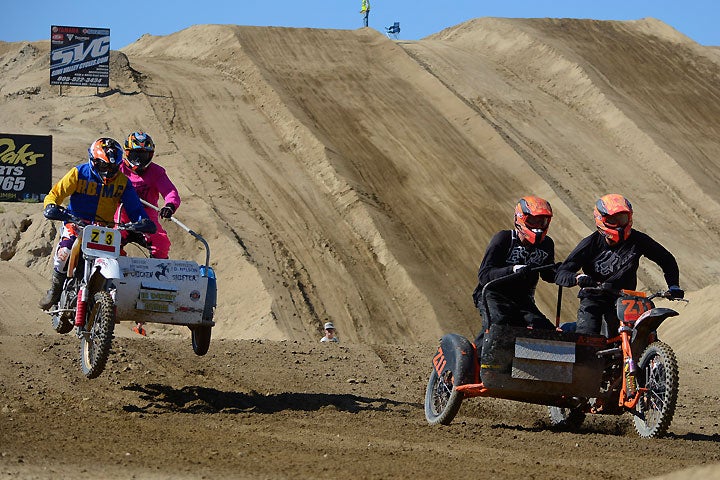
Visit just about any local or club-level motocross, and the sounds are familiar—the thunder of high-performance four-strokes is mixed with the high-pitched zing of two-strokes as the individuals hop, skip and jump their way around the track.
But in America, it’s a rare sight to see two people doing it on the same motorcycle, which probably means only one thing, they’re racing a sidecar.
A genre with a long and storied history in Europe, sidecar motocross in America is widely—and perhaps unfairly—regarded as the domain of eccentrics, a lunatic fringe segment that wants to march to the beat of a different drum. In a sport that is geared toward man and machine, some simply scoff at the notion of a motorcycle class that requires two people to accomplish the work of one. The sidecar riders we spoke to during the recent series finale of the Keyes Toyota AMA SoCal MX Series at Los Angeles County Raceway just laugh at that way of thinking. In fact, they do a lot of laughing as they guide their mechanically intriguing three-wheeled rigs around the track lap after lap.
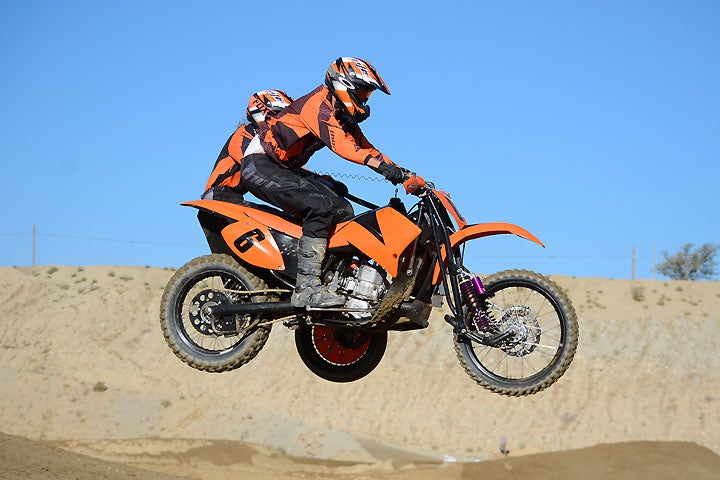
“It’s huge fun,” said sidecarcross veteran Mark Wood of San Diego, California. “It really is all about teamwork. The successes and failures are shared.”
The loosely organized Southern California sidecar group competes in a variety of motocross and Grand Prix events throughout the season, and there are admittedly few members enjoying the fun. Depending on whom you ask, there are currently between eight and 12 active rigs in the Southern California area. The SoCal MX Series finale produced a lower than average four rigs in the class, although this may have partially been due to the fact that the championship was all but wrapped up by then.
The husband and wife team of Mark and Kathy Wood came into the final round of the SoCal MX Series as the defending champions, and when it was over, they repeated their class title for 2016. Mark, 54, is a veteran of sidecar racing, tracing his roots in the sport back to his native England.
“I used to do it as a passenger back in the UK in the late 1980s,” he said. “We ended up over here, and I still wanted to do it, so I bought a 1978 Wasp, but that was really a vintage rig. Then we found this BSU, and we have had it for about five years. It is huge fun. It really is teamwork. Your failures and success are shared.”
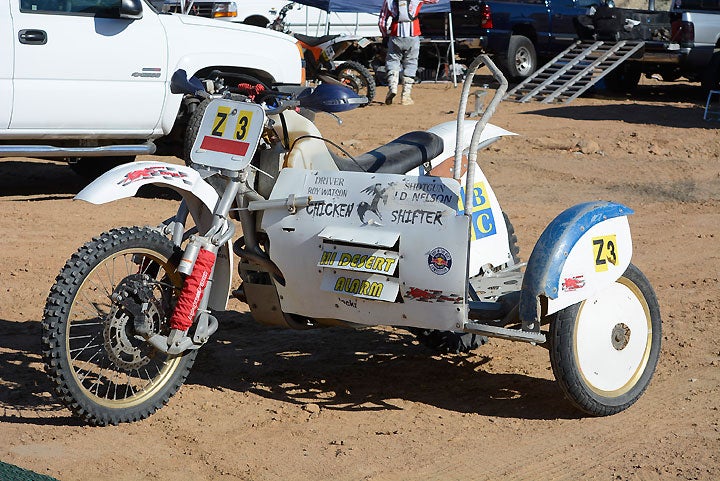
Great, but what the hell is a Wasp? A BSU? The short answer is, they’re part of what makes sidecar racing interesting. Whereas the engine is the heart of most modern motocross machines and the engine and chassis are manufactured by the same OEM, in sidecar racing the manufacturer focus is largely on the chassis. Brands such as WSP, BSU, VMC, Bull SP, WHT and EML put the vast majority of their R&D into chassis construction, and the sidecar teams then fit whatever engines they feel will get the job done. Many of the earliest sidecar motocross rigs were fitted with all manner of air-cooled, four-stroke, twin-cylinder engines from manufacturers such as BMW, Norton, Triumph and Yamaha, but modern rigs will often be found carrying large-displacement two-stroke and four-stroke singles. KTM and Husqvarna are popular options, but there also sidecar-specific power plants. The German-made Zabel is a sidecar-specific 700cc two-stroke that has powered the World Championship-winning teams in 10 out of the last 13 seasons. The Dutch-built WSP chassis has had a stranglehold on the past six World Championship series, snapping a seven-year championship streak by VMC of Belgium.
Manufactured by BSU, the Wood family’s SoCal MX Championship-winning rig is typical of the breed, sporting a chrome-moly chassis powered by an older KTM 550cc two-stroke pirated from the Austrian firm’s discontinued D/XC model. All three wheels feature fully adjustable suspension, but the front end is a large part of what makes sidecars visually unique when compared to two-wheeled dirtbikes. A chrome-moly fork with a Ribi lever-style suspension system featuring two shock absorbers is used since modern telescoping front forks generally aren’t able to cope with the stresses generated by the typical 500-600-pound rigs.
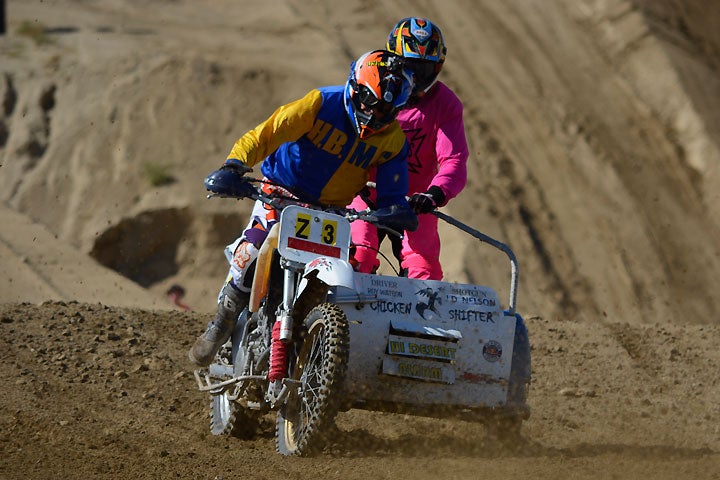
While the rider’s seating area features standard motocross ergonomics, the passenger occupies the “chair” a term that is used loosely as sidecarcross passengers stand for the entire moto, usually with a massive radiator in front of them and an exhaust system that exits by their left foot—you know, in case the radiator wasn’t hot enough. And in sidecarcross racing, the passenger is as much of a rider as the person steering the machine and working the throttle, according to passenger J.D. Nelson of Hesperia, California, who rides with partner Roy Watson of Victorville, California. Hanging onto a large bar that runs the entire width of the chair, the passenger has a huge influence on the rig’s handling.
“It’s a completely different world,” said Nelson, 55, who also races off-road GP events on two-wheeled machines. “If I step in the wrong place or move the wrong way or even breathe the wrong way, we can crash. The passenger has a lot of responsibility. It’s amazing just how much control you have.”
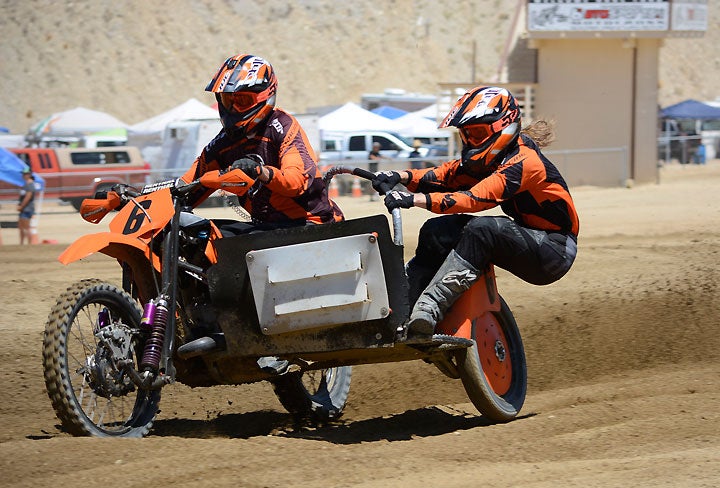
Kathy Wood agrees, adding that each passenger develops his or her own style to help keep the rigs on a given line.
“My style is a lot different because I am lighter,” she said. “My movements have to be a lot more pronounced.”
However, it is clear that Kathy Wood has perfected that technique, which involves alternate movements that include hanging well off her rig’s left-mounted chair when Mark Wood steers the machine into a left-hand turn or draping her body over the back of the rider’s seat in right-hand corners. But she also uses different body positions in response to the terrain on the straight sections of the track, such as jumps or whoops. If there truly is no rest for the wicked, then sidecarcross passengers must be secretly very evil folks because they are clearly working the rig for the duration of each moto!
“You have to keep your knees bent,” Kathy Wood said. “And where you stand has a lot of influence on the attitude the rig takes over the jumps. Mark gave me a few pointers when we first started, but most of it you just have to figure out on your own.”
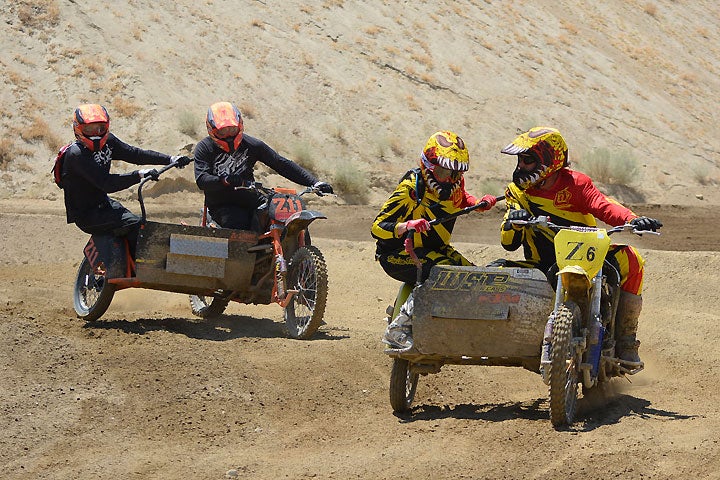
Rider communication is a key to success on the track as well, said Watson, who at 79 is a 48-year veteran of off-road racing.
“Your partner is always there to tell you when you mess up,” he joked. “In one moto today we almost looped out. I was going to blame J.D., but we got to talking about it on the track, and it turns out it was my fault.”
It almost goes without saying that the sidecarcross community is a tight-knit group, pitting together at the races and making themselves available to help fellow teams while spreading the gospel of the sport to curious onlookers. The mission is always to get more people involved. Ace Kale, 59, of Signal Hill, California, came to the final SoCal MX round with a brand new passenger, his 16-year-old daughter, Kellie. Kale’s son, Kevin, also races a sidecar with passenger Mike North, the latter in his first season of sidecarcross.
“That’s the fun of it, racing with my family,” Ace Kale said. “My son and I have been racing together since he was three. The best part of it is when you get into a dice with someone on the track.”
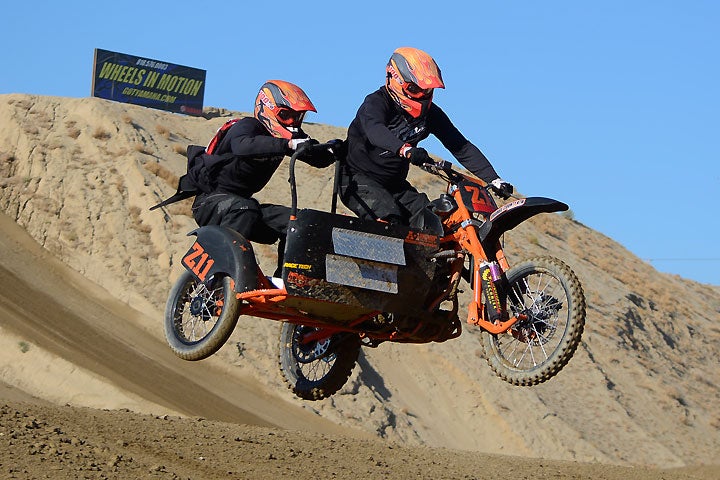
Indeed, while the Woods went on to score 1-1 moto finishes to wrap up their second consecutive class title, Kale/Kale and Kale/North got into an entertaining scrap that also included Watson/Nelson for the first part of Moto 2. Kale/North eventually got the best of it, grabbing second place and finishing second overall. North later admitted that it was his first time “racing anything.”
“They told me Kevin’s nickname was ‘crash,’ and I said, ‘With a name like that, I’ve got to try this,’” North joked. “It’s a great time. I love it.”
Breaking into sidecarcross isn’t as easy as simply running to your local dealer and grabbing a machine, though. It helps to know people who know people, and the Southern California sidecarcross community is more than happy to help point potential competitors in the right direction.
“If you want a sidcar rig,” Ace Kale said, “We will find you one.”
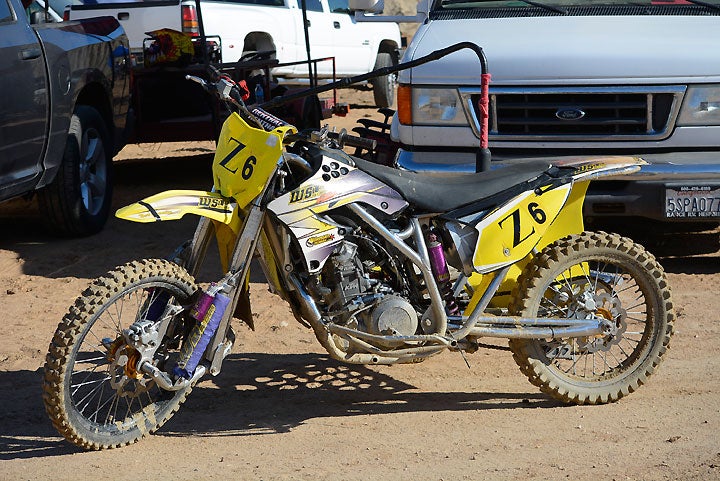
Prices can range from the fairly inexpensive to a serious investment, depending on the rig. Ace Kale’s second-hand, KTM 690-powered WSP rig is a work of art, and the price reflects it. He said that he has over $25,000 tied up in the gleaming, nickel-plated machine. On the other hand, the Wood’s championship winner came at a much more reasonable price, running around $6000 complete with the necessary spares. Mark Wood did say that the biggest part of the equation lies in maintaining the rig properly, as sidecarcross machines require more care than a two-wheeler.
But once you’re bitten by the sidecar bug, it’s hard to shake off the effects. Kathy Wood echoed the sentiments of the sidecar teams on hand at LACR when she said she wouldn’t trade it for any other racing experience.
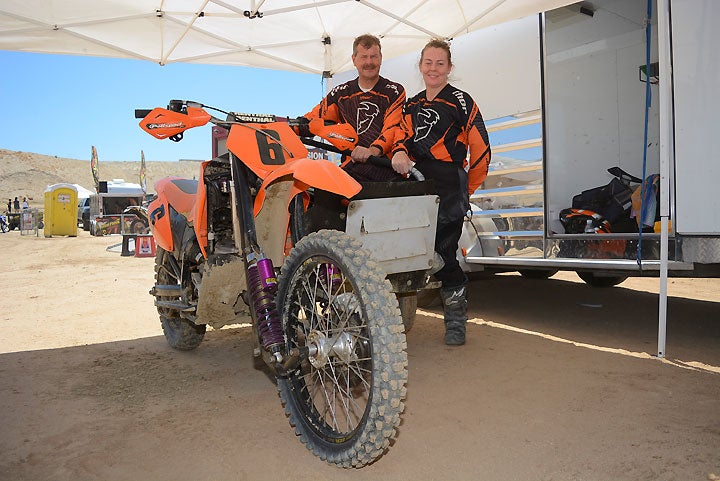
“We were in the UK the first time I saw it live, and I told Mark, ‘We have to do this,’” she said. “We do everything together.”
In sidecarcross, that’s about the only way you can get it done.
For more information on the sidecarcross scene, you can visit www.sidecarcross.com. For more information on Southern California sidecarcross, contact Mike Burns at 323-356-6522.
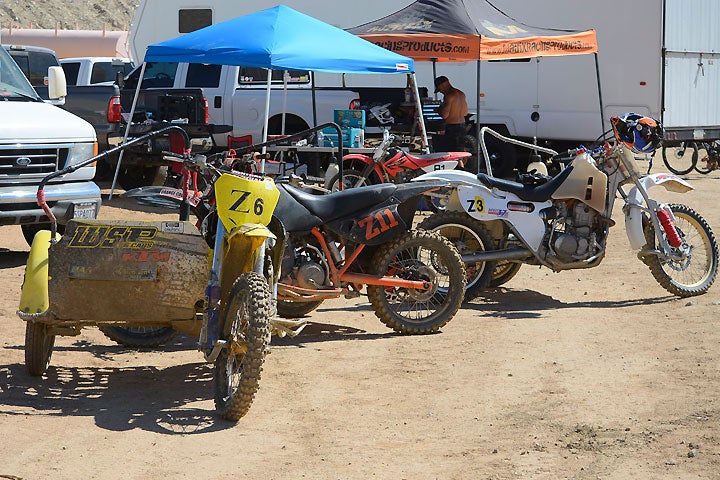
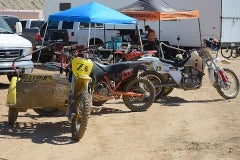
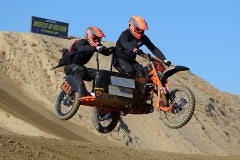
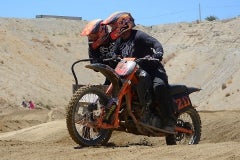
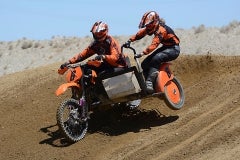
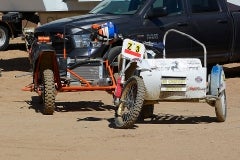
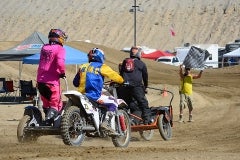
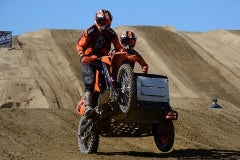
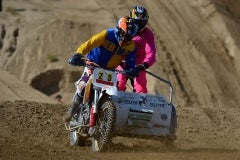
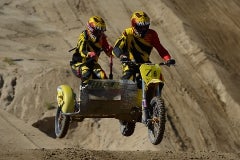
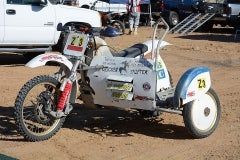
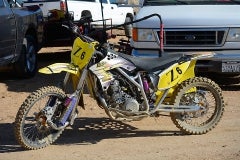
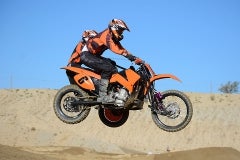
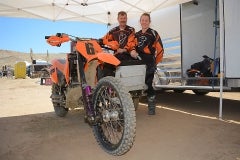
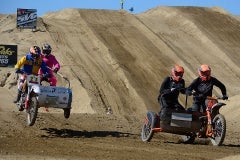
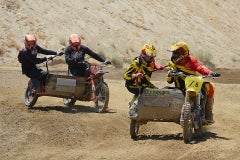
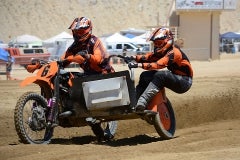
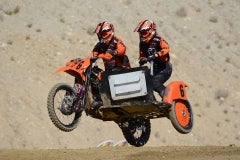
 Your Privacy Choices
Your Privacy Choices